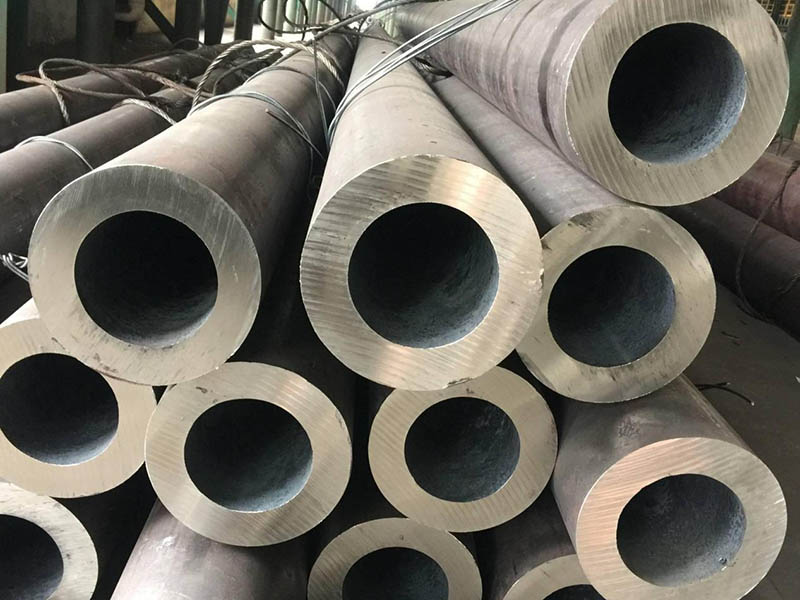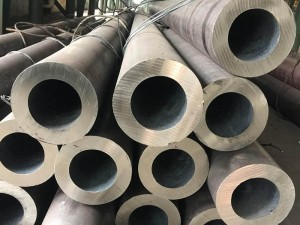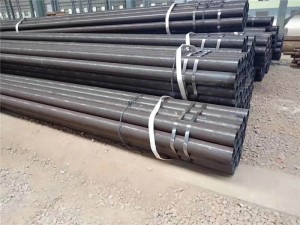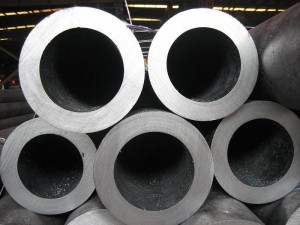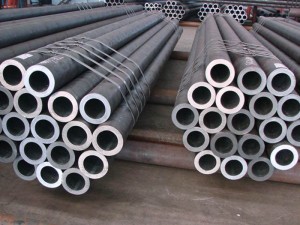ASTM A335 P2 P5 P11 P12 P22 alloy steel pipe
Purpose of 42CrMo seamless steel pipe: the special steel for bridge is "42CrMo", the special steel for automobile girder is "42CrMo", and the special steel for pressure vessel is "42CrMo". This kind of steel improves the mechanical properties of steel by adjusting the carbon content (c). Therefore, according to the carbon content, this kind of steel can be divided into: low carbon steel - the carbon content is generally less than 0.25%, such as 10 and 20 steel; Medium carbon steel - the carbon content is generally between 0.25 ~ 0.60%, such as 35 and 45 steel; High carbon steel - carbon content is generally greater than 0.60%. This kind of steel is not generally used in the manufacture of steel pipes. 42CrMo steel is an ultra-high strength steel with high strength and toughness, good hardenability, no obvious tempering brittleness, high fatigue limit and multiple impact resistance after quenching and tempering treatment, and good low-temperature impact toughness. 42CrMo steel is suitable for manufacturing large and medium-sized plastic molds requiring certain strength and toughness. Hardness: annealed, 147 ~ 241hb, 42CrMo
Tensile strength σ b (MPa): ≥1080(110)
Yield strength σ s (MPa): ≥930(95)
Elongation δ 5 (%): ≥12
Reduction of area ψ (%): ≥45
Impact energy Akv (J): ≥ 63
Impact toughness value α kv (J/cm2): ≥78(8)
Hardness: ≤ 217hb
In order to improve the service life of the die to more than 800000 times, the hardening method of quenching and low-temperature tempering can be implemented for the pre hardened steel. During quenching, it shall be preheated at 500-600 ℃ for 2-4 hours, then kept at 850-880 ℃ for a certain time (at least 2 hours), cooled in oil to 50-100 ℃ and cooled by air. The hardness after quenching can reach 50-52hrc. In order to prevent cracking, it shall be tempered at 200 ℃ immediately. After tempering, the hardness can be maintained above 48hrc. The neutral salt bath vanadization treatment process of 42CrMo steel. The carbide layer can be obtained by neutral salt bath vanadization treatment of 42CrMo steel.
1. Carbon vanadium compound, the carburized layer has uniform structure, good continuity and compactness, uniform thickness, compact structure, high microhardness and high wear resistance, and the surface hardness, wear resistance and adhesion resistance are greatly improved.
2. The solubility of VC in austenite is higher than that in ferrite. With the decrease of temperature, VC precipitates from ferrite, which makes the alloy strengthen and grain refine, and the compound layer shows higher hardness. 42CrMo steel belongs to high carbon and high chromium ledeburite steel, with high carbide content, accounting for about 20%, and is often distributed unevenly in belt or network, with serious segregation. However, conventional heat treatment is difficult to change the carbide segregation, which seriously affects the mechanical properties of the steel and the service life of the die. The shape and size of carbides also have a great impact on the properties of steel. In particular, large sharp angle carbides have a great splitting effect on the steel matrix and often become the source of fatigue fracture. Therefore, it is necessary to modify the forging of raw rolled steel, fully crush the eutectic carbides to make them fine and evenly distributed, and the fiber structure is distributed around the cavity or non directionally, So as to improve the transverse mechanical properties of steel.
During forging, the billet shall be upsetted and drawn from different directions for many times, and forged by the "two light and one heavy" method, that is, the billet shall be lightly struck at the beginning of forging to prevent fracture. It can be heavily struck at the intermediate temperature of 980 ~ 1020 ℃ to ensure the crushing of carbides. 42CrMo steel is not forged, and solid solution double refining treatment is adopted, that is, secondary preheating at about 500 ℃ and 800 ℃ and solid solution treatment at 1100 ~ 1150 ℃, Quenching with hot oil or isothermal quenching, high temperature tempering at 750 ℃, heating at 960 ℃ after machining and final heat treatment after oil cooling can also refine carbides, round edges and corners and refine grains.

